
5th International Conference
On
Innovations in
IOT, Robotics & Automation
(IIRA 5.0)
30th & 31st May 2025, Moradabad Institute of Technology, Moradabad, India
About IIRA 5.0
Advancements in computing technologies and automation have achieved remarkable growth in the last few decades. These advancements improve not only very common areas of our daily life but also areas of education, health, production industries, etc. Internet of Things (IoT), Robotics, and Automation are the recent advancements in technology gaining huge research attention due to the requirement of different types of integration and automation.
Where
Moradabad Institute of Technology
Moradabad, U.P.,India
When
Friday to Saturday
30th & 31st May 2025
How
CMT Paper Submissioin
Click Here

Organizing Commitee
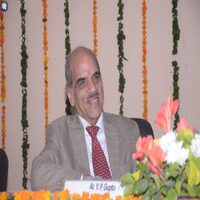
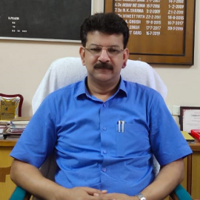


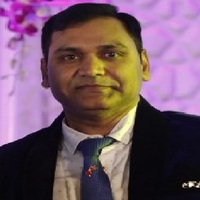
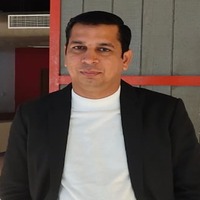


Keynote Speaker


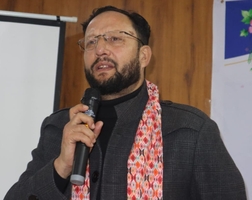





Call for Paper
Original contributions from researchers describing their original, unpublished, research contribution which is not currently under review by another conference or journal and addressing state-of-the-art research are invited to share their work in all areas of Computational Techniques in Engineering & Management. Accepted papers will be published in the Conference proceedings with ISBN Number. At least one author of each accepted paper is required to register and present their work at the conference; otherwise, the paper will not be included in the Conference proceedings. Submission of paper has to be double-blind: the name/s of the author/s is omitted when the paper is submitted to:
Paper Submission To: Conference Paper Submission Template here.Applied Physics
- Materials Science and Engineering
- Theoretical and Computational Physics
- Nuclear and Particle Physics
- Nanotechnology and Nanoscience
- Photonics and Optoelectronics
- Renewable Energy and Environmental Physics
- Acoustics and Ultrasonics
- Plasma Physics and Applications
- Biophysics and Medical Physics
- Astronomy and Astrophysics
- Quantum Mechanics and Quantum Technologies Sub-Topics:
- Advanced Materials and Functional Nanostructures
- Thin Films and Surface Engineering
- Energy Storage and Conversion Technologies
- Computational Modeling and Simulation in Physical Sciences
- Optical Materials and Devices
- Sensors and MEMS/NEMS Devices
- Magnetic Materials and Spintronics
- Radiation Physics and Applications
- Semiconductor Physics and Devices
- Superconductivity and Cryogenics
- Biomedical Imaging and Instrumentation
Engineering in Computational Intelligence and Application
- Computational Intelligence, Deep Learning, Data Compression and Sampling
- Parallel and distributed learning, Big Data analytics and Artificial Intelligence
- High performance computing for data analytics
- Intelligent Information Retrieval, Neural networks and its applications
- Evolutionary algorithms and its applications, Fuzzy sets and its applications
- Soft computing, Multimedia, Web Mining, Crowd sourcing, Crowd Monitoring
Data Sciences in IoT and Information Communication Technology
- Information Communication Technology (ICT)
- Smart Cities, Smart Grids, Smart Textiles, Smart Agriculture and Farming
- Advance Manufacturing, Augmented and Virtual Reality Interactions
- 3D Printing, Smart Water, Smart Healthcare, Management of Emergencies
- Digital Health and Telemedicine
- Ubiquitous computing, Ambient Intelligence Sensor Networks and Embedded System
- Security for IoT, Wearable Devices, Smart city theory modeling and simulation
- Education and skill development, Cloud solutions for smart cities
- Role of big data analysis in smart city, Smart and green building technologies
- Smart solutions for special needs people, Urban Entrepreneurships and challenges
- Platforms for smart government, Digitalization of civic services
- Data and Information infrastructure modeling
High Performance Computing and Machine Learning
- Machine Learning for High-Performance Computing
- Biomedical knowledge discovery and gene deletion data
- Data Clustering and Texture Analysis, Applications
- Image & Video Representation, Compression and Coding
- Active Vision, Tracking and Motion Analysis
- Object and Event Recognition, 2D, 3D Scene Analysis and Visualization
- Knowledge discovery theories, models and systems
- Human-machine interaction for knowledge discovery and management
- Learning for streaming data, Machine learning over the Cloud
- Knowledge based neural networks
- Machine learning and deep learning for images and videos
- Spatial/Temporal Data, Big data visualization, modeling and analytics
- Robot vision systems for Manipulation and Navigation
- Social media applications with images and videos
Information Security and Governance Policies
- E-Governance, Data analysis and Management
- Knowledge Representation and Reasoning
- Pattern Recognition, Clustering and Classification
- Big Data Networking Technologies
- Data warehouse and applications, Access and Usage Control
- Biometric Technologies and Applications
- Cryptographic Algorithms, Information Hiding and Anonymity
- Intrusion Detection and Response
- Malware Detection, Legal and Regulatory Issues
- Mobile Security, Phishing, Risk and Reputation Management
- Network Security, Data hiding
Computational Techniques in Forensic Computing
-
Automotive Security, Content Protection and Digital Rights Management
Data and Software Security, Information Hiding and Anonymity
Intrusion Detection and Response, Legal and Regulatory Issues
Malware Detection, Mobile Systems Security
Phishing, Privacy, Security and Trust in social media
- >Security and Privacy in Cloud and Pervasive Computing
- Security and Trust in Pervasive Information Systems
- Security Awareness and Education, Software Security Assurance
- Threat Awareness, Vulnerability Analysis and Countermeasures
Regenerative Artificial Intelligence in Engineering
- AI in Regenerative Medicine
- Automotive Security, Content Protection and Digital Rights Management
- Unlocking the Power of Regenerative AI
- Digitalization of civic services
- Phishing, Risk and Reputation Management
- Ambient Intelligence Sensor Networks
- Knowledge based Regenerative AI
20 April 2025
5 May 2025
15 May 2025
20 May 2025
25 May 2025
30-31 May 2025
Registration by at least one of the paper's authors is required for conference participation. Presenting the paper at the event is mandatory to ensure its inclusion in the conference proceedings.
| Registration Type | Registration Fee | |
|---|---|---|
Academician / Research Scholar / Student / Industry Expert |
Indian | ₹ 3,000 INR |
| Foreigner | 220 USD | |
CMT- Paper Submission Link
Registration Guidelines
Papers can be submitted on the CMT portal by following the designated submission guidelines provided by the conference or journal. Authors must create an account, upload their manuscript in the required format, and ensure compliance with formatting and ethical standards.
CMT-Paper Submission LinkManuscript Submission Guidelines for IIRA 5.O
Manuscripts, referred to here as submissions, articles, or papers, are substantial pieces of academic writing. Submissions for IIRA 5.O will ONLY be accepted electronically via the online submission system.
For any difficulties with online submission, please contact the organizing team.
Submission Requirements
- Authors must submit only original, unpublished work.
- Manuscripts must strictly follow the IEEE Conference Template.
- References should adhere to the IEEE citation format.
- All fonts must be embedded in the file.
- Fonts requiring non-English language support are not permitted.
- The document must not have password protection.
- Do not include page numbers, headers, or footers in the manuscript.
Review & Acceptance
- Acceptance decisions are at the discretion of the Chair, based on recommendations from the Technical Program Committee and feedback from PC Members/Reviewers.
- Short manuscripts or abstracts will not be considered.
For further inquiries, please reach out to the organizing team.
Technical Expectations
Authors submitting papers to IIRA 5.O must include a quantitative discussion explaining why and how the proposed, analyzed, or discussed technology, concept, or process represents a significant technical advancement in its field.
Out of Scope
Submissions that primarily focus on qualitative or managerial aspects such as impact, effect, case studies, trends, or narratives are outside the scope of IIRA 5.O. Similarly, papers centered solely on policy, decision-making, or economic aspects will not be accepted.
- Research Paper
A detailed report on the author's original work, structured as an electronic manuscript. It may include:- Abstract, keywords
- Introduction, problem statement, objectives
- Methodology, experimental analysis
- Results, conclusions, and future scope
- References formatted per IEEE standards
- Supplementary materials: figures, tables, datasets, graphical representations, and video links
- Review Paper
A comprehensive synthesis and critical evaluation of existing research on a topic within the scope of IIRA 5.O. It may include:- Abstract, keywords, Introduction
- Problem statement, objectives, and significance
- Comparative analysis and research gaps
- Conclusions, pros and cons, and future research directions
- References in IEEE format
- Supplementary materials such as figures, tables, datasets
Self-Citations
Authors should avoid excessive self-citations to ensure academic integrity and relevance.
Citation Style
- References should include only sources cited in the manuscript and must be numbered sequentially following IEEE formatting.
- Personal communications and unpublished works should only be mentioned in the text.
- Do not use footnotes or endnotes as substitutes for the reference list.
Final Manuscript Submission
Once a manuscript is accepted, authors must submit the final version incorporating all necessary revisions as specified in the acceptance notification.
Copyright Transfer
- Authors must transfer copyright of their manuscript to Journal via an via an electronic process.
- Corresponding authors will receive an email with instructions for the e-copyright transfer.
- If any issues arise, authors should contact the conference organizers.
Ethical Standards
- Authors are responsible for ensuring the originality of their submissions.
- Plagiarism, duplicate submissions, and self-plagiarism are strictly prohibited.
- All manuscripts will undergo plagiarism screening using CrossCheck.
- Authors are responsible for ensuring the originality of their submissions.
- Plagiarism, duplicate submissions, and self-plagiarism are strictly prohibited.
- All manuscripts will undergo plagiarism screening using CrossCheck.
By submitting an article, it is understood that all author(s) and co-author(s) have approved its publication. Once the manuscript is accepted, changes to the co-author list are not allowed. However, in exceptional cases, the Editor may consider modifications.
Corresponding Author Guidelines
The Corresponding Author is the designated individual responsible for email communication with IIRA 5.O, regardless of their position in the author sequence. In addition to overseeing the manuscript's content, the Corresponding Author is solely responsible for listing all authors and co-authors with accurate details in the submission. The conference committee assumes that all listed authors have contributed to the submission and have given their consent to be included, as confirmed by the Corresponding or First Author.
Headings
Please limit the use of displayed headings to a maximum of three levels.
Abbreviations
Abbreviations should be defined upon first use and maintained consistently throughout the document. If an abbreviation appears in the abstract, it must be defined both there and at its first mention in the main text.
Email Communication and Notifications
All communication regarding manuscript submissions to IIRA 5.O will be conducted via email. IIRA 5.O is not responsible for any issues related to email delivery, including non-receipt, messages being directed to spam or junk folders, or similar technical problems.






.jpeg)